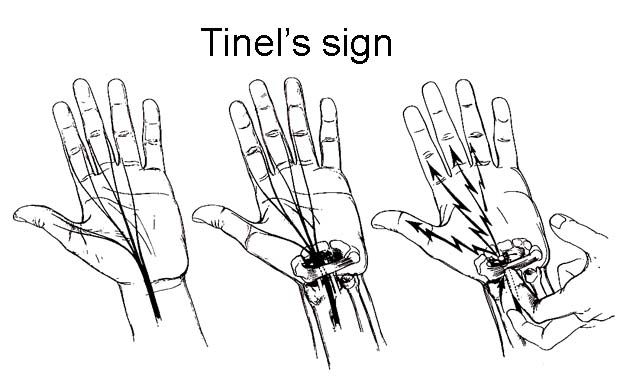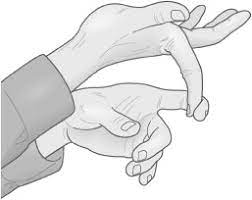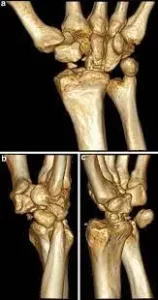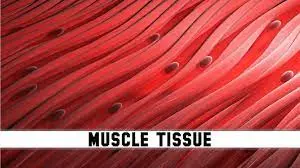Tinel’s Test at the wrist joint:
- This Tinel’s Test at the wrist joint is applied to the clinic to check the CTS = carpal tunnel syndrome.
- This neurological & clinical test is applied by doctor & therapist when the patient is complain about neurological symptoms in the wrist joint.
- This Tinel’s Test at the wrist joint is applied to examine part of the assessment of the wrist joint.
What is the Purpose of the Tinel’s Test at the wrist joint?
- This Tinel’s test is used to check the compression in neuropathy, most commonly in the diagnosing of carpal tunnel syndrome.
What is the Technique of performance of the Tinel’s Test at the wrist joint?

- The patient is in a sitting position for the test.
- The examiner [ therapist ] taps over the carpal tunnel at the wrist.
- A positive test causes tingling/paresthesia into the thumb, index finger [ forefinger ] & middle /lateral half of the ring finger means median nerve distribution.
- Tinsel sign at the wrist joint is indicative of carpal tunnel syndrome.
What is the result of the Tinel’s Test at the wrist joint?
- The tingling/paresthesia must be felt distal to the point of pressure for a positive test.
- The test indicates the nerve regeneration of sensory fibers of the median nerve.
- The most distal point at which the abnormal sensation is felt represents the limit of nerve regeneration.
Which Conditions is associated with when the Positive of the Tinel’s sign?
- Cubital tunnel syndrome
- Tarsal tunnel syndrome
- Thoracic outlet syndrome.
- Radial nerve entrapment
- Superficial peroneal neuropathy
- Carpal Tunnel syndrome
What is Evidence of the Tinel’s Test at the wrist joint?
| Sensitivity of the Tinel’s Test | Specificity of the Tinel’s Test | |
| Carpal Tunnel Syndrome | 25% – 75% | 70% – 90% |
| Cubital tunnel syndrome | 70% | 90% |
| Diabetic neuropathy | 95% | 56% |
Tethered median nerve stress test = TMNST:

- This test is a second test to check the pathology of the median nerve.
- For the tethered median nerve stress test, the patient stands or sits with the elbow flexed position & in supination position of the forearm with the wrist joint in slightly extension.
- The examiner [ therapist ] the index finger at the distal interphalangeal joint.
- If anterior radiating forearm pain is felt, the test is considered positive for median nerve pathology.
- Positive results are more likely in chronic conditions.







2 Comments